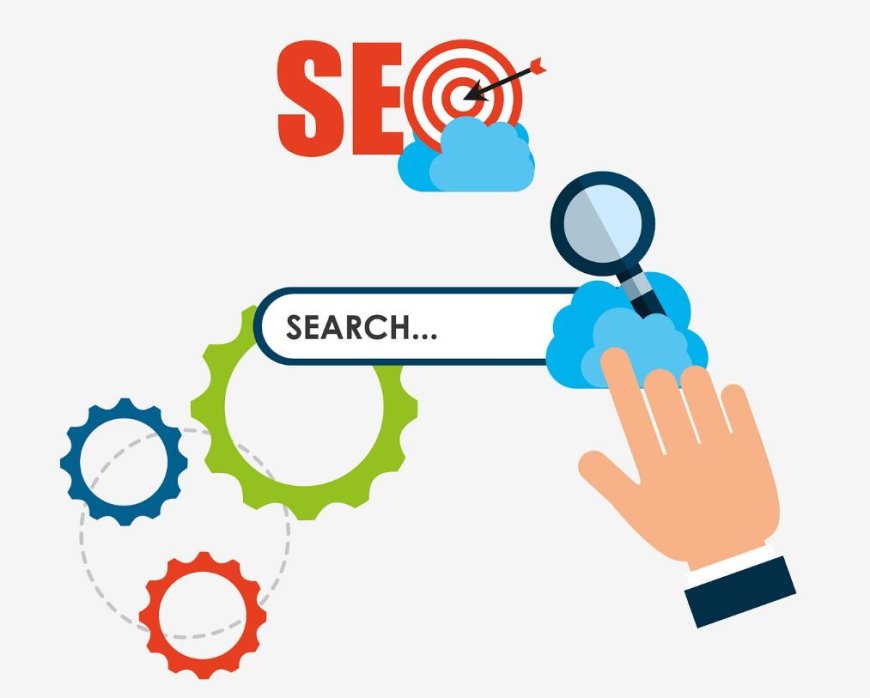SEO vs. SEM: Understanding the Difference and How to Use Both
In today's rapidly evolving digital landscape, the importance of implementing effective online marketing strategies has become paramount for businesses seeking to establish a strong online presence and reach their target audience.

In today's rapidly evolving digital landscape, the importance of implementing effective online marketing strategies has become paramount for businesses seeking to establish a strong online presence and reach their target audience. At the core of these strategies lie two critical components: search engine optimization (SEO) and search engine marketing (SEM). SEO and SEM, while often used interchangeably, are distinct yet complementary approaches to driving visibility and engagement in the digital sphere.
Understanding the nuances between these two disciplines is crucial for crafting a comprehensive and impactful online marketing plan. The purpose of this blog is to provide a clear overview of the digital marketing landscape, highlighting the pivotal roles of SEO and SEM, and offering guidance on how to leverage both effectively within your overall online marketing strategy.
Defining SEO (Search Engine Optimization)
Search Engine Optimization (SEO) is a powerful and multifaceted digital marketing strategy that can deliver remarkable long-term benefits for businesses and websites. At its core, SEO dubai focuses on improving a website's visibility and ranking in search engine results pages (SERPs), ultimately driving organic traffic and enhancing the user experience.
The key components of a comprehensive SEO approach include on-page optimization, off-page optimization, and technical SEO. On-page SEO involves optimizing the content, structure, and metadata of a website to make it more relevant and appealing to search engines. Off-page SEO, on the other hand, focuses on building the website's authority and credibility through tactics such as link building, social media engagement, and local citations.
Technical SEO addresses the underlying infrastructure and technical elements of a website, ensuring it is properly configured for optimal search engine crawling and indexing. By strategically implementing these SEO elements, businesses can enjoy a range of significant advantages. Chief among these is the ability to attract long-term, sustainable organic traffic to their website, as opposed to relying on more costly and short-term paid advertising channels.
Additionally, SEO is an inherently cost-effective digital marketing approach, as it leverages the power of search engines to connect businesses with their target audience in a highly targeted and efficient manner. Perhaps most importantly, a well-executed SEO strategy can dramatically improve the overall user experience by ensuring that visitors are directed to high-quality, relevant, and easily navigable content.
Defining SEM (Search Engine Marketing)
Search engine marketing (SEM) is a powerful digital advertising strategy that encompasses a variety of techniques to drive targeted traffic and visibility for businesses online. The key components of SEM include paid search ads, also known as pay-per-click (PPC) advertising, display advertising, and remarketing. Paid search ads allow businesses to bid on and display their advertisements alongside the search engine results pages (SERPs) for specific keywords and phrases relevant to their products or services.
This immediate visibility on the SERPs can be highly effective in attracting the attention of potential customers who are actively searching for the solutions you offer. Display advertising, on the other hand, involves the placement of visual ads on various websites and platforms across the internet.
This form of SEM enables businesses to reach a wider audience, including those who may not be actively searching for their products or services, through strategically placed banner ads, image ads, and video ads. Remarketing, a crucial aspect of SEM, involves the practice of targeting individuals who have previously interacted with a business's website or online content. By displaying personalized ads to these users, businesses can effectively re-engage with potential customers and increase the likelihood of conversions.
The benefits of implementing a comprehensive SEM strategy are numerous. Immediate visibility on search engine results pages can help businesses quickly establish a strong online presence and reach their target audience. The targeted nature of SEM allows businesses to focus their advertising efforts on the individuals who are most likely to be interested in their offerings, leading to more efficient and effective marketing campaigns. Furthermore, the measurable results provided by SEM tools and analytics enable businesses to track the performance of their campaigns, optimize their strategies, and make data-driven decisions to continuously improve their marketing efforts.
Key Differences Between SEO and SEM
When considering the merits of organic versus paid search results, there are several key factors to weigh. The cost implications present a notable distinction - organic search engine optimization (SEO) requires ongoing efforts and investments to improve a website's visibility and rankings over the long-term, while paid search advertising, such as pay-per-click (PPC) campaigns, incurs direct costs for each user click but can deliver more immediate results. The time frame for realizing meaningful outcomes is another crucial differentiator.
Organic SEO is a long-game strategy, as building authority and climbing search engine rankings takes sustained, patient work. Conversely, paid search ads can provide a faster pathway to visibility and traffic, though this advantage comes at the expense of a continuous financial commitment. Underpinning both organic and paid approaches is the crucial role of keywords and targeted content. Effective SEO relies on in-depth keyword research, content optimization, and a comprehensive understanding of user search intent. Paid search, on the other hand, requires a strategic approach to bidding, ad copy, and audience targeting to maximize the return on advertising spend. Striking the right balance between these two complementary techniques can be instrumental in driving impactful, long-lasting results.
What's Your Reaction?
 Like
0
Like
0
 Dislike
0
Dislike
0
 Love
0
Love
0
 Funny
0
Funny
0
 Angry
0
Angry
0
 Sad
0
Sad
0
 Wow
0
Wow
0


















































